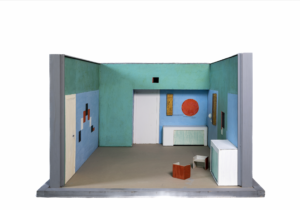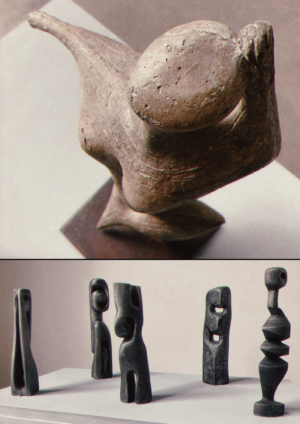On the occasion of the 100th anniversary of the first automobile with a scientifically based, aerodynamic design, Kunsthaus Dahlem is dedicating the first monographic exhibition in Berlin to the engineer, artist and mathematician Paul Jaray (1889-1974). The fluid mechanical discoveries that led to his Ley prototype of 1922 not only revolutionised automotive design but also intervened dramatically…
 Erich Buchholz, »Architectural model studio Herkulesufer 15, Berlin«, 1922/1968, Foundation for Concrete Art and Design, Ingolstadt. Photo: Hubert P. Klotzeck.
Erich Buchholz, »Architectural model studio Herkulesufer 15, Berlin«, 1922/1968, Foundation for Concrete Art and Design, Ingolstadt. Photo: Hubert P. Klotzeck.
On the occasion of the 50th anniversary of the death of Erich Buchholz (1891-1972), the Kunsthaus Dahlem is presenting an exhibition in cooperation with the Foundation for Concrete Art Ingolstadt and the National Museum in Szczecin about the versatile artist, whose post-war oeuvre is now being presented for the first time prominently in focus. While…
Under the title »Tinged,« last year’s winner of the Bernhard Heiliger Fellowship Lena-Elise Aicher shows works from current production. Lena-Elise Aicher, born in Konstanz, studied sculpture at the University of the Arts in Berlin and graduated as a master student with Manfred Pernice.
 Bernhard Heiliger, »Two figures in relationship I«, 1953, Berlin, Bernhard Heiliger Foundation. © VG Bild-Kunst, Bonn 2023.
Vadim Sidur, »The female principle« (cycle), 1965, Berlin, Karl Eimermacher Collection
Bernhard Heiliger, »Two figures in relationship I«, 1953, Berlin, Bernhard Heiliger Foundation. © VG Bild-Kunst, Bonn 2023.
Vadim Sidur, »The female principle« (cycle), 1965, Berlin, Karl Eimermacher Collection
Two post-war artists strove for freedom of expression: Bernhard Heiliger (Germany), who, at the rise of defamation against formalism, moved from the Soviet sector to the American, and Vadim Sidur (USSR), who was banned from exhibiting in his homeland after his very first show and soon even restricted from travelling abroad. Today, well-known pieces by…
Plato (about 427–347 BC) once came to the conclusion that the place in which thought appears sets the direction for its movement. In the 1970s, various philosophers broadened the understanding of place and space, especially public space. Thus, for example, Gilles Deleuze (1925–1995) and Felix Guattari (1930–1992) outlined: different surfaces of social, political, cultural, and…